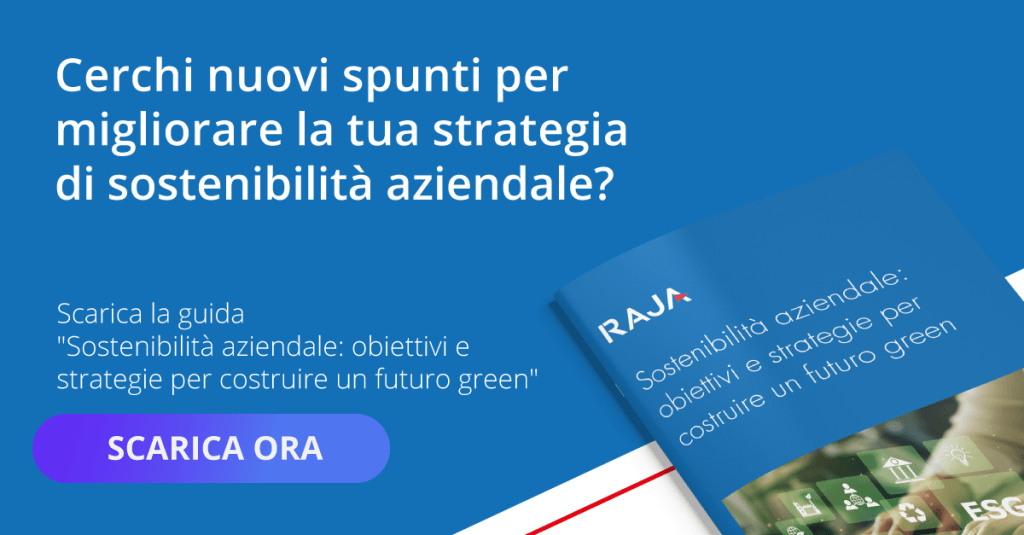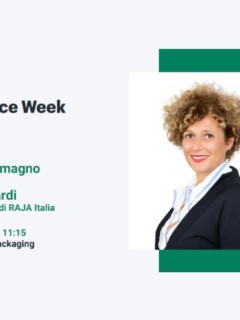The green packaging is becoming a fundamental pillar for environmentally aware companies. This trend, driven by growing ecological awareness and the evolution of Italian and international regulationshighlights the fundamental role of sustainable packaging in corporate strategies.
In Italy, the packaging sector is rapidly adapting, with regulations increasingly geared towards reducing environmental impact and promoting eco-compatible practices.
Characteristics of Green Packaging
L’sustainable innovation is revolutionising the materials and methods used to produce packaging. The secondary packagingsuch as boxes and adhesive tapes, play a key role in protecting products and are indispensable for shipping them.
In the current scenario, wheree-commerce is constantly growing, the need for reliable and efficient packaging becomes more and more pressing. With the increase in online sales, the demand for packaging that guarantees the safety of products during transport has become crucial. We cannot ignore the use of packagingshipping a product without adequate packaging significantly increases the risk of damage. Therefore, packaging not only protects the contents but is a fundamental element of the online shopping experience, contributing to customer satisfaction and the seller’s reputation.
Materials such as recycled paper and cardboard are replacing less eco-friendly solutions, but not only that, single-material packaging is becoming increasingly popular to facilitate recycling. To explore these issues further, we have created a comprehensive overview of sustainable packaging.
Main Italian regulations on secondary packaging
In Italy, packaging regulations, in particular with regard to secondary packaging, are driven by both national regulations and by European Union directives. These regulations focus on reducing the environmental impact of packaging and promoting sustainable practices.
In addition to regulations onlabelling of packagingin Italy there are other important regulations concerning packaging:
- CONAI (National Packaging Consortium). CONAI manages the recovery and recycling of packaging in Italy. For packaging placed on the market, companies are required to pay a CONAI Eco-contribution. This contribution varies according to the type of packaging material and serves to cover the costs of collection, recovery and recycling of packaging after its use.
- Food Contact Material (FCM) Regulations. In Italy, as in the European Union, there are specific regulations governing materials intended to come into contact with food. These regulations ensure that materials, including packaging, do not release harmful substances into food and do not alter the composition or properties of the food itself. Compliance with these regulations is essential to ensure the safety and wholesomeness of food.
- Eco-contributions for specific types of packaging. In addition to the CONAI Eco-contribution, additional contributions may be made for specific types of packaging, based on specific packaging and waste management programmes. These programmes are part of a broader effort to promote the circular economy and reduce the environmental impact of packaging.
These regulations and programmes are examples of how Italy is addressing the issue of packaging waste and its sustainability, both from an environmental and public health perspective. It is important for companies to be aware of these regulations to ensure compliance and help reduce theenvironmental impact of packaging.
European legislation and ecodesign in secondary packaging
Recent developments in European legislation, as highlighted by the European Parliament, place emphasis on theecodesign to ensure the sustainability of products on the market. This approach also applies to secondary packaging, such as cardboard boxes and adhesive tapes. The legislation provides for the assessment of the environmental impact of products throughout their life cycle, with a specific focus on durability, reparability and recyclability.
The European eco-design legislation aims to improve the circularity and environmental sustainability of products, including both primary and secondary packaging. The EU draft regulation for sustainable products (ESPR) is based on the existing existing Ecodesign Directiveby extending its rules to cover almost all categories of physical goods.
Among the proposed requirements include:
- durability,
- reusability,
- upgradeability,
- reparability,
- presence of substances that inhibit circularity,
- energy and material efficiency,
- recycled content and recycling,
- carbon and environmental footprints.
A key aspect is the introduction of the “Digital Product Passport“which will provide detailed information on the performance, traceability, harmful substances and environmental impact of products. This tool will be crucial for secondary packaging manufacturers, as it will allow greater greater transparency and will promote the adoption of more sustainable practices.
Furthermore, the European Commission is extending these standards to almost all types of products, including those in the packaging sector. This means that secondary packaging will be subject to stricter requirements in terms of energy efficiency e reduction of environmental impact.
Innovations and future developments in secondary packaging
Italy, in strict adherence to European directives, is actively committed to promote improvements in the efficiency and sustainability of packaging. This commitment is realised through the development of new materials for innovative packaging, with an emphasis on fully recyclable or compostable solutions. In parallel, we see the introduction of advanced technologies to ensure efficient traceability and facilitate the recycling of packaging.
The Italian and European legislation on secondary packaging pay strong attention to sustainability and environmental efficiency. These strict standards not only ensure environmental protection, but also incentivise companies to innovate and adopt increasingly eco-friendly practices in the design and use of packaging. This synergy between legislation and environmental innovation initiatives reflects a joint commitment to a future in which packaging is a key ally of sustainability.















